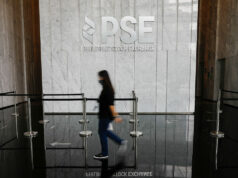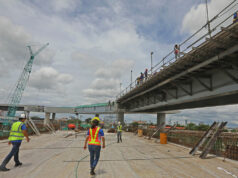Peso surges as BSP keeps policy settings steady
THE PESO surged versus the dollar on Friday, boosted by the central bank’s decision to keep both interest rates and bank reserve levels steady during this week’s meeting.
The local unit ended the week at P52.32 against the greenback, up one percent or 52 centavos from Thursday’s P52.84 finish. This is the currency’s best showing since March 11’s P52.20 close.
The peso traded stronger throughout the session, opening at P52.60 to a dollar. It touched P52.67 as its weakest showing for the day before settling at its best rate at the closing bell.
Sought for comment, two traders both pointed to the results of the previous day’s Monetary Board meeting, the first to be chaired by new Bangko Sentral ng Pilipinas (BSP) Governor Benjamin E. Diokno.
“The main driver of course was the less-than-dovish BSP meeting [on Thursday]. There was no RRR (reserve requirement ratio) cut even if majority have been pricing in one,” one trader said in a phone interview.
The Monetary Board decided to keep the policy rate unchanged at 4.75% on Thursday, citing the need to be cautious even if inflation has been steadily dropping.
BSP Deputy Governor Diwa C. Guinigundo also said that the board has not yet trimmed the 18% RRR, noting that they “want to get the timing right” before unleashing additional money supply in the economy.
The trader added that “very dovish” comments from the US Federal Reserve at the close of its own policy review also kept the dollar down, and prompted market players to recalibrate their investments.
“Majority of market players were caught long, this prompted the players to cut their long dollar positions,” the trader said.
Dollars traded on Friday reached $1.18 billion, up from the $1.009 billion that exchanged hands the previous day.
Apart from the results of the rate-setting meeting, a second trader also noted the clarifications about the P52-55 exchange rate range previously stated by Mr. Diokno in a television interview.
“The BSP was not as dovish as expected. There was also no mention of an RRR cut, while Deputy Governor Guinigundo brushed off the P52-55 band,” the trader said.
Mr. Guinigundo said that the P52-55 range is not a BSP-imposed band on the exchange rate; instead, it was an assumption used by economic managers of the Duterte administration “for budget purposes.”
The trader said the clarification effectively “disregarded” Mr. Diokno’s previous comment, which also triggered a one percent drop for the peso on March 12. It was the same day when the new BSP chief announced plans to cut the RRR by one percent per quarter for the next four quarters. — Melissa Luz T. Lopez



